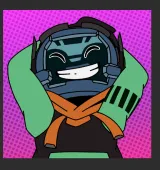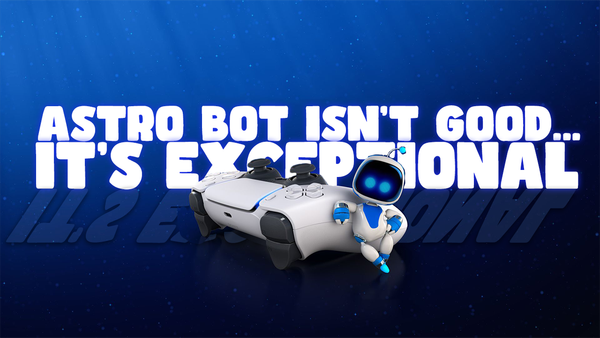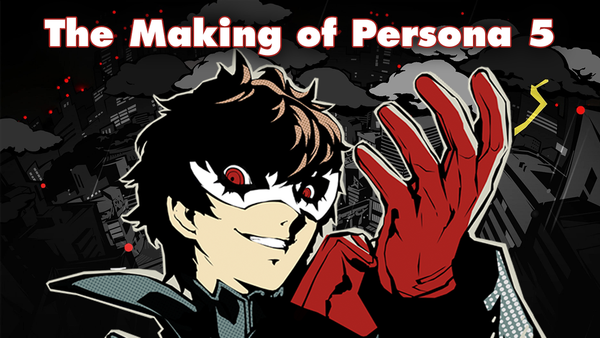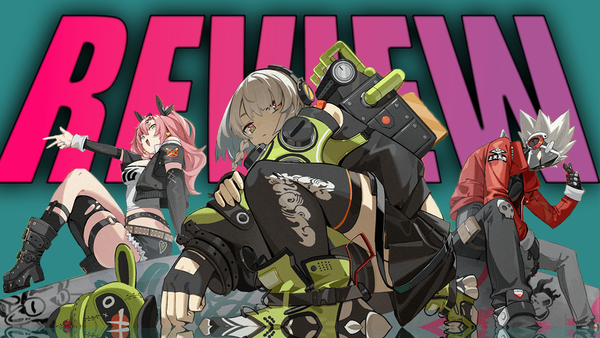Clair Obscur: Expedition 33 is An Absolute Masterpiece (Review)

Overview
There’s something undeniably powerful about a story that manages to captivate you from the very beginning—one that introduces characters who resonate, a world that demands your attention, and a premise that feels impossible to ignore.
These are the kinds of games that don’t just entertain—they evoke genuine emotion. Not only through the emotional weight they carry, but in how deeply they connect with you on a personal level.
Clair Obscur: Expedition 33 is one of those rare experiences. From the moment it begins, it draws you in with its stunning world, compelling narrative, and an ensemble of charming, fully-realized characters. Developed by Sandfall Interactive—a studio made up of former Ubisoft talent—this debut title is nothing short of extraordinary. In fact, I truly believe Expedition 33 isn’t just a strong contender for Game of the Year; it’s a game that will be remembered and talked about for years to come.
The way in which all of Expedition 33's components click together creates moments that are unforgettable, whether it is its incredible soundtrack, the stacked cast with fantastic performances, and a more interactive approach to turn-based combat, that is underpinned by gameplay systems that make player experimentation satisfying. It wears elements of its influences on its sleeve but still manages to feel fresh and distinctive.
It may sound like an unusual comparison, but the emotional impact and narrative twists in Expedition 33 struck me in a way that I haven’t felt since Nier: Automata. Both games share a masterful approach to storytelling—and both are elevated by phenomenal soundtracks that linger long after the credits roll. On top of that there is this quirky universe that feels off-beat and different, but like it is meaningful and underneath the wackiness offers a sense of deeper meaning, which is something I feel many games struggle to do.
Before we dive in, I want to make it clear: this review will be spoiler-free in terms of story details. However, due to the nature of the footage shown—and the many twists and visual surprises the game has to offer—there will be some visual spoilers. If you’d prefer to avoid those, I recommend listening to the video or coming back to watch it later.
With that said, let’s jump into my review of Expedition 33.
Story
One of Expedition 33’s greatest strengths lies in its narrative—a story that immediately captures your attention and pulls you deep into its world without ever letting go. In fact, the less you know going in, the better your experience will be. That’s why I’ll be keeping this portion of the video brief, offering just the elevator pitch of what the story entails. Rest assured, though—I do plan to release a dedicated video diving into the full depth and brilliance of the narrative, because simply put, Expedition 33 tells an exceptional story.
The tale begins in the city of Lumiere, the last known safe haven in a world overshadowed by ever-present sorrow. Looming over the city is the Paintress, a towering, god-like figure who awakens once a year to mark a stone with a number. That number determines the age of those who will be “gommaged”—erased from existence, in a manner reminiscent of Thanos’ snap.
You play as Gustave, a member of the titular Expedition 33, who—along with his comrades—sets out on the 33rd annual journey to kill the Paintress and break the cycle of death and loss.
At its core, Expedition 33 is a story about grief, and the different ways people cope, persevere, and find meaning in the face of suffering. It explores themes of family, mortality, and the painful cycles we often find ourselves trapped within.
If you're interested in a deeper breakdown of the story and its themes, I’ll be covering all of that in a future video—so consider subscribing. But for now, let’s shift focus and talk about the gameplay.
Gameplay
Combat
Let’s begin our discussion of Expedition 33’s gameplay by diving into its combat system—an intriguing blend of multiple ideas unified into a distinct experience. At its core, the game features traditional turn-based combat, functioning similarly to other entries in the genre. However, that’s just the foundation.
During development at Sandfall, the team referred to their combat philosophy as “reactive turn-based,” a concept that became a core pillar of the system. This approach layers on mechanics that push the genre forward in subtle but meaningful ways.
One of the biggest shifts is in how resources are managed. Instead of mana, Expedition 33 uses AP (Action Points), which are spent to perform actions and can be replenished mid-battle. On the defensive end, the game introduces rhythm-based mechanics, requiring players to time dodges or parries against enemy attacks. Successfully parrying not only opens the enemy up for a counterattack but can also restore AP—adding a reactive, skill-based layer to the usual turn structure.
There’s often a stigma around turn-based combat—that it’s slow or lacks the excitement of real-time action. While I personally enjoy the strategic depth of turn-based systems, it's clear many developers are trying to shake that perception. Games like Final Fantasy VII Rebirth have leaned into hybrid systems to bring more immediacy to combat. Expedition 33, however, makes a strong case for how classic turn-based combat can still be intense, rewarding, and deeply engaging. Every enemy turn becomes a test of reflexes and timing—something that reminded me, surprisingly, of Sekiro.
The game also features an alternative fire system reminiscent of the gun mechanic in Persona 5. Here, players can manually aim and target enemy weak points, adding another tactical layer. Each party member also has access to Ultimate abilities or limit break-style moves for high-impact moments.
What truly sets Expedition 33 apart, though, is the distinctiveness of each character’s playstyle. Lune, for instance, feels like a hybrid of a White and Black Mage, using elemental orbs called "Stains" to enhance spells. Maelle focuses on managing combat stances, while Moccron plays like a Blue Mage, channeling abilities from defeated foes. These unique mechanics encourage varied strategies and make team composition feel meaningful.
It’s easy to spot the game’s influences—from classics like Lost Odyssey to more modern titles—but Expedition 33 brings everything together in a way that feels fresh and cohesive. I can confidently say: you’ve never played a turn-based game quite like this.
Exploration and Side Quests
Beyond its solid combat, Expedition 33 brings back a classic JRPG staple—the world map—and what a welcome return it is. I’ve genuinely missed this feature. It’s a joy to traverse the world, watching it gradually open up in new and surprising ways as the game progresses. The map isn’t just for show either; it’s packed with meaningful side content. From optional bosses and clever puzzles to bustling towns and cities, the game offers a diverse range of activities. There are even platforming challenges—though these are probably the weakest aspect of the exploration.
Still, the variety in optional content and side quests is impressive. One standout for me involved teaching a Nevron how to play the trumpet—simple, quirky, and surprisingly delightful. These side quests carry a unique charm and eccentricity that perfectly match the game’s world. This is also where Expedition 33 reminded me of NieR—with its oddball characters, strange requests, and offbeat stories, all embraced wholeheartedly by the game’s tone and design.
What I appreciated most was how the world continuously expanded with each act, always giving you something new to discover. As for runtime, don’t expect an 80-hour marathon. If you're aiming to complete everything, you’re likely looking at around 60 hours, while a focused run through the main story should take about 30. Still, with such a richly detailed world full of dungeons, puzzles, and labyrinths, you’d be missing out if you didn’t take the time to explore.
Gameplay Systems
Progression
Abilities and Build-Crafting
Let’s start by diving into the progression systems that form the backbone of Expedition 33's excellent combat. At the core of this is build-crafting, which begins with character-specific abilities. As each party member levels up, they unlock new abilities that gradually shape their distinct combat roles and playstyles.
With every level gained, you’ll earn a skill point used to unlock or enhance these abilities. Additionally, you receive three attribute points to distribute among core stats like health, might, speed, and luck. These attributes directly influence how each character performs in battle, allowing you to tailor them to fit your preferred playstyle.
Picto's and Skill Progression
While basic stat and ability upgrades are fairly standard fare in RPGs, Expedition 33 sets itself apart through its unique skill progression system centered around Pictos.
Pictos are special skills or perks acquired through exploration, combat, or purchase from vendors. Each Picto not only grants a useful in-combat effect—like gaining 1 AP at the start of battle—but also boosts base stats, such as providing +500 HP and +100 Speed. This dual functionality makes each Picto a valuable piece of your character's build, affecting both moment-to-moment combat and broader strategic planning.
Though characters fall into certain jobs or archetypes, Pictos allow you to break out of strict class boundaries and customize your party as you see fit. You can equip up to three Pictos at a time, offering plenty of room to experiment. And the game doesn’t stop rewarding you—there’s another layer of progression that expands on this system: Lumina.
Lumina and Secondary Skills
Lumina functions as a secondary skill system, extending the utility of your collected Pictos. Each character has a Lumina point pool, which lets you assign additional Pictos as passive abilities, even if they’re not in your active three-slot loadout.
Just like Pictos themselves, you’ll find resources throughout the world that increase a character’s Lumina capacity, allowing for even deeper customization. This results in a satisfying gameplay loop: you’re constantly acquiring new Pictos, assigning the most potent ones to your main slots, and using the rest to fill out your Lumina tree for added perks. Crucially, no Picto ever feels wasted—everything has potential use depending on how you choose to build your characters.
Weapon Progression
Finally, there’s weapon progression. Weapons are found throughout the world and come with up to three abilities that unlock as you level them up. They also carry elemental affinities that affect basic and ranged attacks.
Each weapon scales with two specific attributes—such as Vitality and Might—making it important to match weapons with characters who are built to optimize those stats. While the weapon system is more straightforward compared to Pictos and Lumina, it seamlessly ties into the broader progression design. Together, all these elements reinforce each other, making every upgrade feel meaningful and every build decision impactful—hallmarks of a well-designed RPG.
Social and Party Relationships
As you progress through Expedition 33, you'll encounter campfire moments that introduce a relationship-building system reminiscent of Social Links. At these camps, you can delve deeper into each party member’s personal story and character arc. This system isn’t just for narrative flavor—it ties directly into gameplay by unlocking enhanced Gradient Ultimate attacks, which we touched on earlier in the combat section.
While this social system is one of the more lightweight mechanics in the game, it succeeds in what it aims to do: offering meaningful character development and emotional depth. It also provides a welcome break from the relentless bleakness of the world, creating small, comforting moments of connection in an otherwise harsh and sorrowful setting.
Visuals, Sound, and Presentation
Visual
Now let’s talk about the audiovisual experience and overall performance of Expedition 33.
Visually, Clair Obscur: Expedition 33 is nothing short of stunning—especially when you consider it’s a double-A title. The game’s architectural design and environmental detail are rich with mood and atmosphere, each area feeling distinct and memorable. What truly elevates the visual presentation is the game’s masterful use of color. Whether it’s vibrant hues or subtle tones, each environment pops with flair, etching itself into memory through striking palettes and compositional artistry.
The art direction draws heavy inspiration from France’s Belle Époque period—an era rarely explored in games. The developers have blended this historical aesthetic with dark fantasy elements, creating a world that feels both hauntingly elegant and uniquely grounded in its cultural influence. This choice doesn’t just give the game its visual edge; it gives it identity.
Underpinning all of this is the power of Unreal Engine 5, with technologies like Lumen and Nanite playing a key role in bringing the world to life. These tools enhance lighting and detail, making crumbling buildings and ruined cityscapes feel immersive while retaining a stylized, almost painted quality—especially evident when traversing the overworld map. The result is a visual presentation that feels cohesive, imaginative, and artistically distinct.
The world is further brought to life through imaginative landmarks and environmental storytelling. Each location you visit feels like a real place with its own character and rhythm. The character designs also stand out—particularly the Gesturals, whose aesthetics break away from typical genre norms, and the Nevrons, whose variety and presentation make each one feel visually unique.
Sound
What truly seals the deal for me is the music. Expedition 33 features a phenomenal soundtrack that elevates every moment—emotional or triumphant—to unforgettable heights. The score is nothing short of breathtaking, and when paired with the game’s exceptional voice performances, it creates a powerful emotional synergy. Whether it’s a heartbreaking story beat or an adrenaline-fueled boss battle, the music knows exactly how to amplify the moment. It’s the kind of soundtrack that stays with you long after the credits roll.
I mentioned earlier how Expedition 33 delivers gut-wrenching narrative twists and emotionally charged storytelling. Much like NieR, one of the game’s greatest strengths is how its music works hand-in-hand with its writing to leave a lasting impact. In my view, this game is an easy frontrunner for Best Score and Soundtrack of the year.
On top of that, the voice acting is nothing short of stellar. Performances by Ben Starr, Jennifer English, and Charlie Cox are truly exceptional, bringing depth, nuance, and raw emotion to their characters. Honestly, I wouldn’t be surprised if any—or all—of them earn award nominations for their work here. Their performances, combined with the music, are what make Expedition 33 feel truly unforgettable.
Performance
Last but certainly not least, let’s talk about performance. Expedition 33 ran smoothly for the vast majority of my 40-hour playthrough. I consistently achieved frame rates above 60fps, with virtually no stuttering or noticeable drops in performance. On top of that, I encountered no visual glitches or game-breaking bugs, which is impressive considering the game’s visual ambition.
That said, I did run into one recurring issue. After extended play sessions—typically after a couple of hours—the game would occasionally freeze and crash, prompting a system pop-up notifying me of the crash. This happened about three times throughout my playthrough. While it’s a frustrating hiccup, the game’s frequent auto-saving ensured I never lost more than a few minutes of progress.
It’s not a deal-breaker by any means, but if you're particularly sensitive to stability issues, it’s something to keep an eye on. Hopefully, it’s something that can be addressed in a future patch.
Conclusion
To bring it all together, Clair Obscur: Expedition 33 is a game that’s both unforgettable and, in moments, quietly introspective. The buzz and acclaim surrounding it are well deserved. It’s remarkable that a small team of just 30 developers at Sandfall Interactive has delivered an experience that confidently stands shoulder-to-shoulder with major AAA titles released in the same year.
The story is compelling, emotionally satisfying, and at times, genuinely beautiful. The soundtrack is a standout—so evocative that it’s already earned a place in my regular listening rotation. While the gameplay loop doesn’t necessarily reinvent the genre, it reimagines familiar mechanics with fresh energy and thoughtful design. It draws from both classic and modern RPGs, addressing common criticisms of turn-based combat with dynamic systems that keep both player and enemy actions consistently engaging.
Expedition 33 is a rich, sprawling experience with a world map as ambitious as the JRPGs that inspired it, yet focused around a story so strong it’s difficult to put down. Across my 40-hour journey, I found myself completely absorbed in its world. Sandfall Interactive has painted a striking, unforgettable canvas—and in doing so, has firmly established itself as a studio to watch.
Whether or not Expedition 33 takes home Game of the Year, one thing is certain: this is a game that will be remembered. Its rich world, unforgettable characters, and powerful narrative will be discussed for years to come—and for me, that’s more than enough.
Thanks for watching, I hope you enjoyed the video and I'll be making a video discussing Expedition 33's narrative in-depth and sharing my thoughts so if you enjoyed this video and want to see more consider subscribing. But thank you for watching as always, have a good one.




